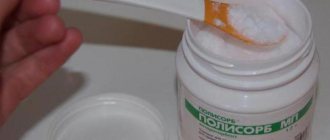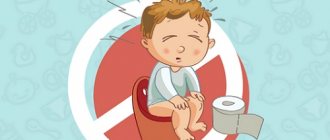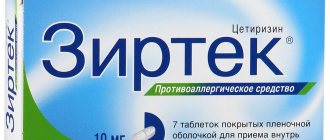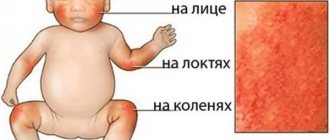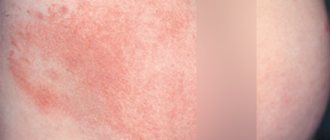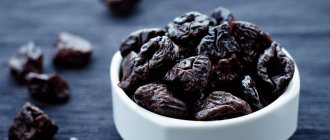“Polysorb” is one of the very popular sorbents, which is often prescribed to adults to remove a wide variety of toxic substances, toxins, allergens and other harmful compounds from the body, which, judging by numerous reviews, it does very well. It is no less popular in the treatment of children, including even infants.
Officially, the drug is called “Polysorb MP”, but in conversations doctors and parents often omit these letters, so you should understand that “Polysorb MP” and “Polysorb” are the same medicine. It has a very wide range of uses - from digestive disorders and pathologies of internal organs to colds and poisoning. That is why doctors advise including such a drug in the home medicine cabinet of all young parents.
Release form and composition
The only form of Polysorb is powder, which is mixed with liquid to form a suspension that is taken orally. This powder is white in color (sometimes with a blue tint) and does not have any odor. It is sold either in 3-gram portioned sachets or in plastic jars holding from 15 to 50 grams of medicine.
Its only component is colloidal silicon dioxide. The dose of this compound corresponds to the amount of powder in the purchased package, since there are no other substances in the bag or jar. Polysorb MP is not available in the form of tablets, pastes, capsules or other forms.
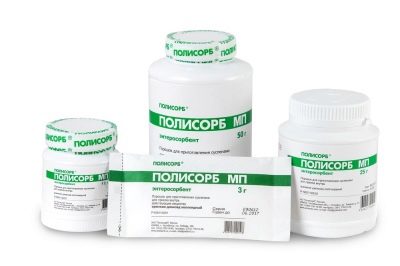
Treat with love
Polysorb for infants can be diluted not with water, but with expressed breast milk, so it is much easier for babies to drink insoluble sorbent particles. How to give the drug to children from six months of age, when the patient may already object to a suspension in milk, is a separate problem. Some mothers add powder to juices and jelly, others offer the drug from a spoon or sippy cup - the main thing is to give the sorbent so that the baby drinks it.
Desperate, some mothers are interested in whether it is possible to give Polysorb in dry form, but here they will be disappointed. Dry powder should not be given. But you can try mixing it with broth or puree, then the baby may not notice the medicine at all.
The dosage calculated according to the instructions is usually safe and most effective, but you can additionally calculate the amount of dry matter together with your pediatrician to avoid errors in treatment. The advantage of Polysorb is that a small overdose does not have any long-term negative consequences even for infants, and this makes the drug the most preferable.
Is it prescribed for newborns and infants?
There are no age restrictions for the use of Polysorb in children. This sorbent is prescribed even to infants who have just been born, as well as to infants up to one year old. The medicine is not prohibited during breastfeeding, since it has no effect on the baby whom the mother is breastfeeding.
However, the use of such powder at an early age requires compliance with certain conditions:
- the drug can be given only after examination by a doctor, since there are some contraindications for it, which are difficult for parents to assess without a specialist;
- In infants, the drug is used sporadically so as not to affect the absorption of beneficial nutrients and not to deteriorate the composition of the microflora.

Indications
"Polysorb" is in demand in the treatment of children under one year of age in the following cases:
- if the child has any intoxication, signs of which include vomiting, fever, diarrhea and other symptoms;
- if the baby is diagnosed with dysbacteriosis;
- if the baby has become infected with viruses or pathogenic bacteria (not only with an intestinal infection, but also with the flu and other diseases);
- if the level of bilirubin in the blood of a newborn baby is very high or jaundice does not go away for a long time;
- if the baby is poisoned by any toxic substance, for example, a medicine in an accidentally exceeded dose or ethyl alcohol;
- if any allergic reaction is diagnosed, as well as with diathesis and an increased risk of allergies;
- if the baby has kidney disease, in which the function of this organ is severely impaired.

Contraindications
"Polysorb" is used for intoxication of the body, gastrointestinal infections, allergies.
- intoxications of various origins, occurring in acute and chronic forms;
- acute gastrointestinal infections - from poisoning to dysbacteriosis;
- non-infectious diarrheal syndrome;
- intoxication due to purulent-septic destruction of internal organs;
- acute poisoning with various substances;
- allergies to foods, medications;
- hyperbilirubinemia in viral hepatitis, hyperazotemia in chronic kidney dysfunction.
Inorganic sorbent is not recommended for the treatment of children and adults if there are such serious disorders as:
- ulcer of the stomach and duodenum in the acute phase;
- bleeding from the gastrointestinal tract;
- decreased peristalsis and loss of intestinal tone;
- intolerance to the active formula of the drug.
• gastric or duodenal ulcer in the acute stage;
• bleeding from any part of the digestive system;
• intestinal atony – a condition in which peristalsis is reduced or absent.
Adverse reactions occur very rarely and mainly when the recommendations specified in the instructions for use are grossly violated or the dosage is exceeded. In such situations, rashes may appear after Polysorb, as well as microflora disturbance.
Some mothers note constipation from Polysorb in their infants. To help your baby cope with this problem, you should give him more fluids.
Since the drug has the ability to remove drugs, it is advisable to take it between doses of other medications.
In contact with the environment, the baby is exposed every minute to the influence of bacteria, allergens, and harmful microorganisms. When the body cannot resist them, it should be helped. Polysorb is an indispensable drug for the treatment of children in the first year of life. It contains no harmful additives and can be mixed with breast milk and other liquids. The drug begins to act within five minutes after administration, and the therapeutic effect lasts for a long time.
The most powerful new generation sorbent “Polysorb” shows high efficiency in the treatment of such pathologies as:
- poisoning of various origins;
- frequent loose stools;
- allergies to medications, products;
- toxicosis;
- hangover syndrome.
If jaundice persists for a long time, a drug may be prescribed for treatment.
The medication in question is widely used to cleanse the body and remove excess bilirubin from the blood of newborns. An increased content of a unique bile pigment provokes jaundice, which is expressed in varying intensity in each baby. Usually this pathological condition goes away on its own in 1-1.5 weeks and does not require medical intervention.
Polysorb is not prescribed for the treatment of jaundice in newborns if the following pathological conditions have been identified:
- ulcerative lesions of the stomach and duodenum in the acute phase;
- personal intolerance to the components of the drug;
- decreased intestinal tone;
- bleeding from the digestive system.
The drug is well tolerated, so side effects when taking it are extremely rare. "Polysorb", used for jaundice in newborns, can cause constipation, as well as a lack of vitamins and calcium in the body. To prevent problems with stool, doctors recommend drinking up to 3 liters of fluid daily.
Side effects
Some babies experience allergy symptoms after using the powder. Occasionally, taking Polysorb can also cause constipation in a child. In this case, the medicine should be stopped immediately and, after consulting a doctor, replaced with an analogue to which the baby’s body will react normally.

Instructions for use
Having opened the Polysorb package, you need to carefully take out the required amount of powder (the mass is amorphous and easily rises into the air), and then dilute it with plain water. If the medication is given to a newborn, it is permissible to dilute it with breast milk or a milk substitute. For babies who have already tried complementary foods, you can combine the powder with compote or juice so that the little patient drinks the medicine more willingly.

The time of taking the drug should be coordinated with the toddler’s diet. Polysorb should be given to infants an hour and a half after feedings or an hour before them. If such a sorbent is prescribed for atopic dermatitis and other manifestations of food allergies, it is given to infants during meals.
Typically, Polysorb is given three times a day, and in order to calculate a single dosage, you need to know the child’s weight. If the baby weighs less than ten kilograms, then take 0.5 teaspoon of powder at one time. For toddlers weighing more than 10 kg, a single serving of Polysorb will be a full spoon, without a “slide”. To dilute one dose of the medicine, use from 30 to 50 ml of liquid - this volume is recommended by the manufacturer for children who weigh less than 20 kg. This is noted in the table in the instructions.

The duration of treatment with Polysorb for each child is determined individually, since it is influenced by both the reason for using the powder and the reaction of the child’s body to the treatment. If the medication is prescribed for digestive problems or intoxication, it is often given to the baby for only a few days. For serious pathologies (kidney diseases, infections, allergies), the doctor may prescribe Polysorb in longer courses, but usually they do not exceed 2 weeks, so as not to provoke negative reactions.
Types of jaundice: causes of jaundice, symptoms and treatment, treatment methods
People's skin color directly depends on genetics.
Its intensity is influenced by melanin, a coloring pigment; the more of it, the brighter the color. The skin tone can also be different depending on the proximity of the vessels and the thickness of the skin layer. Sclera - the mucous membranes of the eyeball are not heavily dotted with vessels, so they are white. The mucous membranes are well supplied with blood and are close to pink in color. The main symptoms of jaundice are the color and shade of the skin changing from any to yellow.
What is jaundice?
In fact, jaundice of the integument is not a disease, but it can be a manifestation of serious pathological processes occurring inside. The most common manifestations of jaundice in children and adults are:
- liver pathologies;
- pathologies of the bile ducts;
- disruptions in the hematopoietic system.
Any jaundice indicates that excess bilirubin has accumulated in the blood and is now collected in the tissues. Bilirubin is a coloring pigment formed as a result of the breakdown of red blood cells in liver cells. During normal operation, it is in this organ that bilirubin settles and is then washed out with bile.
Several types of jaundice
In medicine, there are the following types of jaundice:
· Hemolytic (suprahepatic). Possible in a number of diseases associated with increased breakdown or transformation of red blood cells. This produces a large amount of hemoglobin, from which bilirubin is synthesized.
This type of jaundice is observed after blood transfusion of different groups or a conflict of Rh factors during pregnancy, during intoxication with various poisons.
With this disease, the patient’s skin becomes yellow, closer to a lemon tint, and the stool darkens.
· Parenchymatous (hepatic cell). Characterized by damage to liver cells. Typically, this picture is typical for viral or bacterial hepatitis, toxicosis before the third half of pregnancy, and in newborns as a result of genetic changes.
Liver cells transformed as a result of the disease lose the ability to secrete bile into the bile ducts, and it enters the blood through the lymph. The main symptom of this type of jaundice is a skin tone closer to saffron-yellow or reddish, or greenish in case of prolonged illness.
Itchy skin, discolored stool, and dark urine may also occur.
· Mechanical (subhepatic). It develops when the bile or hepatic ducts are blocked, that is, when normal bile outflow encounters any obstacle in its path: stones, sand, tumor, helminthic infestations, etc.
The causes of mechanical jaundice are often inflammatory processes of the biliary tract, when the mucous membranes swell greatly. At first, the liver does not suffer, but bile continues to be released, and eventually the ducts stretch. The walls of the bile ducts rupture, and through the lymphatic pathways, bile with bilirubin enters the general bloodstream.
The skin acquires a greenish tint, itching is pronounced, and feces become colorless.
False jaundice is not common; with it, the mucous membranes do not change color. Develops with prolonged and frequent consumption of foods high in carotenes: carrots, pumpkin, oranges, etc.
In this case, the integument is bright yellow, but the reason for its appearance has nothing to do with bilirubin.
This type of jaundice does not threaten a person and goes away on its own after restoring a normal diet.
Other symptoms and manifestations of jaundice
So, why is jaundice dangerous? For example, hemolytic, mechanical and parenchymal jaundice are fraught not only with changes in the color of the skin, but also entail the following manifestations:
- general weakness;
- nausea and vomiting;
- dizziness;
- itching of the skin.
The intoxication that accompanies these types of disease is very pronounced in various types of hepatitis.
Bilirubin is secreted not only on the skin, but also on the mucous membranes of the intestines, so to cleanse them, the optimal solution would be to include the drug Polysorb in complex therapy.
Today it is considered one of the most effective.
This drug will help quickly remove excess bilirubin, eliminating further intoxication. Assistant-Polysorb
Polysorb is the exact answer to the question of what to do first when you have jaundice. It binds excess bilirubin and toxins and then removes the toxins and bilirubin from the body. This is the main condition for proper and quick cleansing and elimination of unfavorable factors. Thus, the sorbent reduces the amount of coloring pigment in the blood, neutralizing the effect of harmful agents.
The course of taking Polysorb is 10-14 days. For adults standard dosage:
- 1 heaping tablespoon of the substance;
- 0.5 cups of water at room temperature;
- drink 3 times a day.
For children, the dosage is calculated depending on body weight. Detailed information about the amount of substance and water can be found in the instructions for use of the product.
The advantages of Polysorb also include:
- the ability to use for any age categories of patients, from infants to pregnant, lactating women and the elderly;
- works only in the intestines, does not penetrate into the blood, and does not have a negative effect on the body;
- removes harmful elements without affecting the beneficial intestinal microflora;
- works against many diseases, including ARVI, poisoning, diarrhea, allergies, etc.
Polysorb is sold in any pharmacy without a doctor's prescription; there is only one form of the medicine - a white, odorless and tasteless powder. Packaged in plastic jars with a screw cap or sachets with different dosages for adults. Cannot be used dry, only with water.
Why is Polysorb right for you?
- Recommended for use by people of all ages.
- Begins to act 1-4 minutes after administration.
- Does not contain preservatives, dyes or sweeteners. Neutral in taste.
- Gently removes harmful substances and normalizes intestinal microflora.
The dosage of the drug is calculated individually depending on its weight according to the instructions
.
If you have difficulty calculating your individual dose of Polysorb, you can get a free consultation by phone: 8-800-100-19-89
or in the
consultation
.
- Where can I buy?
- About the drug
- Instructions
- Reviews
- Specialist consultation
Source: https://www.polisorb.com/ru/articles/vidy-zheltukhi-prichiny-zheltukhi-simptomy-i-lechenie-metodika-lecheniya/
Terms of sale and storage
Purchasing Polysorb MP at a pharmacy does not cause any difficulties, since this sorbent is classified as an over-the-counter product. But you should not purchase it for a baby without a doctor’s prescription. The price of the powder depends on its quantity in the package. For example, for a jar containing 50 grams of the drug, you need to pay about 350 rubles, and one bag with 3 grams of the drug in different pharmacies costs from 40 to 80 rubles.
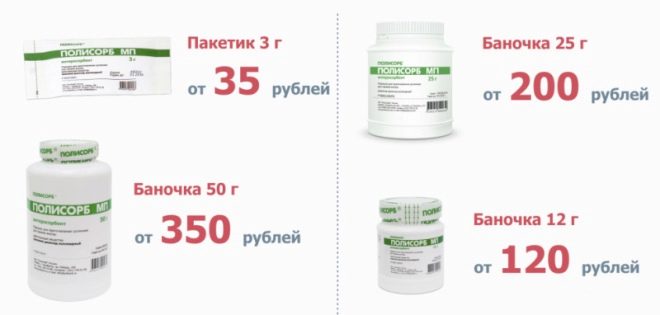
You can store the medicine at home at room temperature, and the jar must be tightly closed. The shelf life of the undiluted drug is 5 years. After dilution with liquid, the suspension can be stored for up to 48 hours, but for children it is best to dilute a fresh portion for each subsequent dose.
Goodbye colic, goodbye constipation. Hello regular bowel movements and happy baby.
Hi all. Today I want to share my impressions of taking Polysorb. I had been planning to write a review for a long time, but I waited for more time to pass so that I could definitely see the result.
I'll start from the beginning. Like most babies, my daughter developed colic when she was 3 weeks old. She was on breastfeeding for up to a month, then on breastfeeding for up to 2.5 months, and at 2.5 months she switched completely to the Nutrilak premium mixture. My tummy hurt every day, my daughter cried, couldn’t fart, and didn’t eat well. The peak was in the evening (probably like most). We saved ourselves with a Bobotik and a Windi gas outlet tube. Over time, Bobotik stopped working. We also took a course of Linex and Bifidumbacterin. On top of that, I was worried about constipation; I had stool once every 3 days. Then I decided to buy Nutrilac Fermented Milk and gave it twice a day. The stool became once every 1-2 days, more often every 2 days.
Everyone tells mothers to be patient, saying that when you hit 3 months, you will forget about colic like a bad dream. This is exactly what happened with my son. And now I’m looking forward to when my daughter turns three months old and we forget about massage, tubes, Bobotik, etc. But it was not there. A week before my daughter turned 3 months old, the situation got worse. Hell has come, the real one. My stomach was no longer bothering me in the evenings, but all day long. My baby screamed, slept for 15 minutes 2-3 times a day, moaned at night in her sleep and woke up with a terrible scream, and refused to eat. One day she did not eat for 12 hours, from 6 am to 6 pm, and screamed only when the mixture entered her mouth. I drank water in one gulp and that was it. I rocked her in my arms and cried with her. This went on for 2 weeks. My husband said that this is not normal, it should get better, but it got worse. We decided that our daughter did not have simple colic, but something more serious. We took a capprogram, but it turned out to be normal. We decided to go to the pediatrician. The doctor ordered a bunch of tests, blood, urine and feces for dysbacteriosis, etc., and also said to give KM a mixture through feeding, that is, alternate between two mixtures. They say the baby has fecal stagnation, hence the colic. She also prescribed Enterofuril and told me to start taking it.
But my husband was sure that my daughter had dysbacteriosis, which is why her stomach hurt so much and insisted on taking sorbent to cleanse her intestines. I’ll say right away that I was against such measures. He insisted on taking activated charcoal, but I had no idea how to give it to a 3-month-old baby. Having scoured the entire Internet, children's forums, etc., I came across the drug Polysorb many times. That it is excellent for cleansing the intestines of negative microflora and can be given from birth. Crossing my fingers, I went to the pharmacy and bought it and also bought Bak Set, since in parallel with the sorbent it is necessary to give prebiotics and probiotics in order to populate the intestines with beneficial microflora.
In general, they started giving Polysorb the day before going to the doctor.
At the appointment, I asked if it was possible to give Polysorb instead of Enterofuril, to which the pediatrician replied that it locks, and you already have constipation, so it’s not possible. I kept silent about the fact that I had already started giving it and left. We bought Enterofuril on the way back. Arriving home, I sat down to read the instructions and was in slight shock. It turns out that this is an antimicrobial drug that is prescribed for diarrhea, i.e. diarrhea and its side effect - constipation. Is the doctor hurt? “You can’t drink Polysorb, it’s blocking, you’d better drink this, although it’s also blocking.” Polysorb's side effects say that constipation is extremely rare. In the end, we decided to continue taking it. In the first half of the day Polysorb, in the second Bak Set.
Reviews
You can see mostly positive reviews about the use of Polysorb in infants. They confirm the effectiveness of such a sorbent against diarrhea, dermatitis, colic, jaundice, dysbacteriosis and many other problems.
The disadvantages of the medication mainly include its not very pleasant taste, which makes it difficult to give the drug to infants.
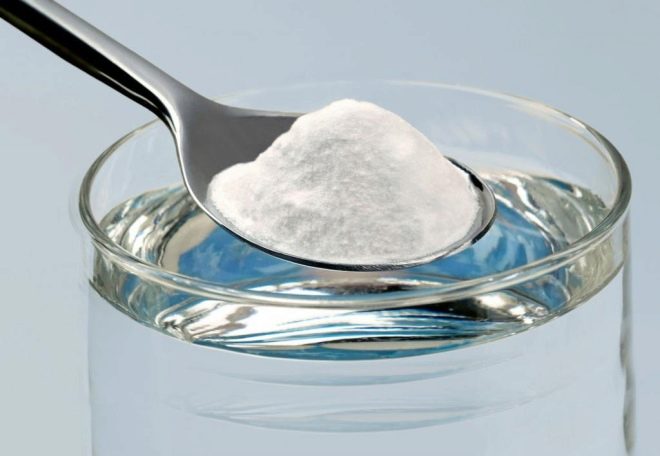
Description
"Polysorb" is a medical enterosorbent. The main task is to bind and remove harmful substances, poisons and toxins from the blood and the body as a whole. The drug works in the gastrointestinal tract, but is not absorbed into the intestinal walls. In this case, toxic compounds are eliminated naturally along with the unchanged sorbent.
Thanks to its safe composition and principle of action, Polysorb is actively used at any age and in patients with various ailments. The drug is effective in combating harmful components such as:
- plant pollen and other allergens;
- waste products produced by bacteria, fungi, parasites;
- excess urea, bilirubin, cholesterol and other metabolic products;
- toxins in cases of poisoning and drug overdose;
- accumulated radioactive substances and salts of heavy metals.
"Polysorb" painlessly removes harmful substances from the body without absorption in the intestines.
- with dysbacteriosis that has developed against the background of an intestinal infection;
- for diarrhea caused by poisoning;
- with physiological jaundice in newborns.
The active formula of the drug, consisting of silicon dioxide, is endowed with the unique ability to bind to organic molecules to form an insoluble colloid, which is then excreted from the body. The active ingredient works in the intestinal lumen, is not absorbed into its walls, and therefore does not accumulate in the body. Silicon dioxide colloid is excreted along with adsorbed toxins in the feces.
Analogs
other similar products to replace Polysorb with another enterosorbent for your baby
- "Enterosgel". This white paste is sold in bags and tubes. It works thanks to a porous silicone base and can be prescribed from birth. This paste is tasteless, but there is also a sweet version, but this “Enterosgel” is not used in children under one year of age.
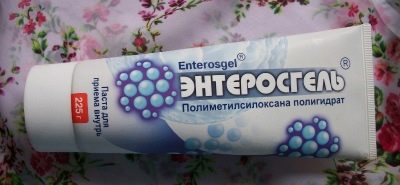
- "Smecta" . This popular smectite-based sorbent is safe for newborns, is of natural origin and is available in portioned sachets. For a child, you can purchase both powder and a ready-made suspension.
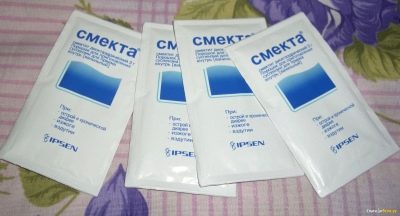
- "Enterodesis." This medicine is also available in powder, packaged in sachets. Its active ingredient is povidone. This substance actively absorbs various toxic compounds, therefore it is used in the same cases as Polysorb.

Watch all about the drug “Polysorb” in the following video.
Not a panacea
It is necessary to use a sorbent when treating an infant for diarrhea and allergies, but it is important to remember that the sorbent only binds dangerous compounds and removes them from the body. That is, it does not have a direct therapeutic effect, and the cause of the disease usually cannot be cured with Polysorb.
The fact that the rash has disappeared, bowel movements have improved, and the runny nose has stopped bothering me is, of course, a good sign. However, if the doctor has prescribed other medications in addition to Polysorb, you cannot stop treatment ahead of time. Polysorb alleviates the baby’s condition, makes the body more susceptible to treatment, but also removes some of the healing substances. Therefore, the doctor’s requirement to give drugs in a certain order and at intervals is also important.
And most importantly: do not try to treat a baby yourself, especially based on reviews from the Internet or from friends. All babies are different, they all have different levels of susceptibility to treatment, different resistance to viruses and allergens. And only visiting a doctor and full observation during the treatment process can ensure the child not only a speedy recovery, but also the absence of delayed consequences.

